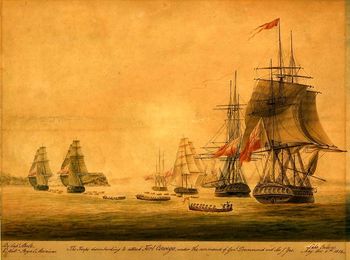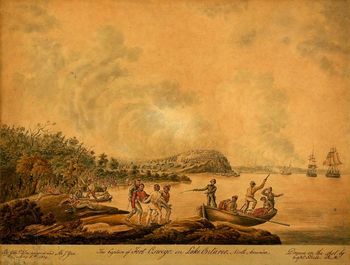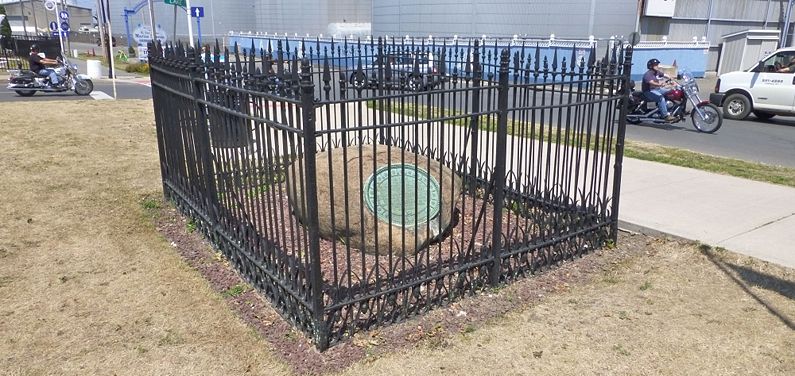Fort Oswego
| More information at Warlike, Wikipedia
Fort Oswego (1727-1756) - First established by the British in 1727 as a stone blockhouse named Fort Burnet. Expanded in 1741 and known briefly as Fort Pepperrell (1745-1746), and thereafter known as Fort Oswego. The post was destroyed by a large French force under General Montcalm in 1756 and not rebuilt. Site of American works and water battery during the Revolutionary War and the War of 1812. Located at the city of Oswego in Oswego County, New York. Also known by the French as Fort Chouaguen.
Early HistoryThe British first built a trading post at this site in 1722 but fortified it with a stone blockhouse in 1727 after the French at Fort Niagara built their stone "House of Peace" in 1726. They named the fortification Fort Burnet for Governor William Burnet. In 1741 the fortification was expanded by adding stone walls with bastions at each corner and the expanded fortification was briefly called Fort Pepperrell before reverting to the official Fort Oswego name. French & Indian War (1754-1763)As the French & Indian War began, the fortification was further strengthened by General William Shirley and garrisoned with some 1700 British regular and colonial troops. General Shirley also built Fort Ontario on the other side of the river and Fort George on the same side of the river. Fort Oswego was the strongest of the three British forts and had the largest garrison. The French under Montcalm assembled a force of some 3000 soldiers and Indians and attacked Fort Ontario from the lake and succeeded in driving the defenders off on 13 Aug 1856. He then trained his own cannon and captured cannon from Fort Ontario down on Fort Oswego. The British commander was killed by a French cannon shell on 14 Aug 1756 and the second in command surrendered the garrison. The French took away some 1700 prisoners, 121 cannons and destroyed what they couldn't take with them. The three forts were left in ruins. The British did not reoccupy Oswego until 1758 and they did not rebuild the fortifications. War of 1812 (1812-1814)During the War of 1812, Fort Oswego served as a supply and transit point for troops and supplies from New York headed for fortifications in the Great Lakes. The fort itself was in a state of disrepair and mounted only 5 cannons in a water battery. By 1814 the garrison numbered 242 men of the 2nd U.S. Artillery and an equal number of militia and sailors. In May of 1814, British General Sir Gordon Drummond and British Commodore Sir James Yeo mounted an attack from ships in the lake with about 1000 troops and succeeded in capturing the fort. General Drummond was able to carry off some 2,400 barrels of supplies and further destroy the fort and barracks. The British had hoped to capture 21 cannons en route to Fort Oswego but the cannons had not yet arrived when the raid took place. The cannons later proved to be critical to the Americans gaining control of the lake. The War of 1812 ended with the Treaty of Ghent signed on 24 Dec 1814. Current StatusTwo markers at the corner of West 1st St. and Lake St.
See Also: Sources:
Links:
Visited: 27 Jul 2012 | ||||||




